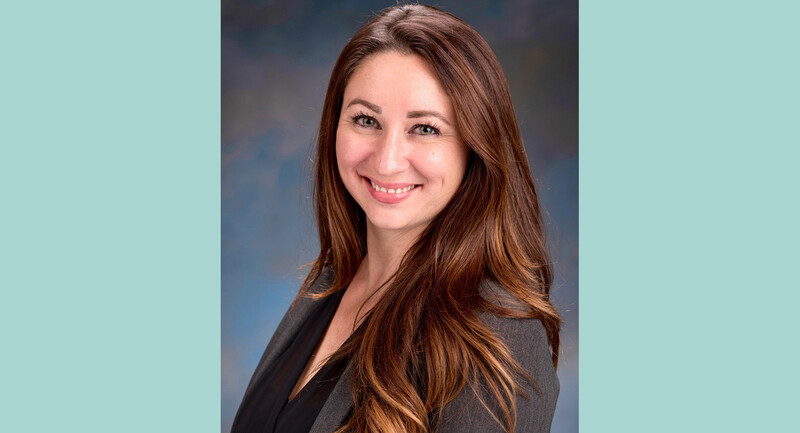Teacher shortages have re-entered the national consciousness as quarantines and the intense stresses created by the COVID-19 pandemic drained teaching staffs last school year, even causing some schools to close temporarily. As West Virginia teacher Samantha Twohig explained in an interview with NEA Today, "People are just exhausted. We've seen more teachers retire in the first semester than we had in my entire time here." A national survey in January found that two-thirds of teachers said they were burned out and 55 percent thought they would leave the profession sooner than they had planned (Walker, 2022).
In New Mexico, Governor Lujan Grisham sent in members of the National Guard to serve as substitute teachers and spent a day serving as a substitute herself, before persuading the legislature to raise minimum salaries for teachers by $10,000 and guaranteeing a 7 percent raise for all school employees. Mississippi teachers received the largest pay increase they have ever seen—about $5,100 on average—and other salary boosts occurred across the country (Walker, 2022). But most of these barely returned teachers to their wage levels at the start of the Great Recession in 2008, when budget cuts created teacher layoffs across the country while class sizes grew and working conditions worsened.
Déjà Vu All Over Again
Unfortunately, none of this is new. Ever since I entered public school teaching in the early 1970s, the nation has been in a recurring cycle of teacher shortages. At that time, I was one of many thousands of recent college graduates who, by agreeing to become a teacher, received loan forgiveness through the National Defense and Education Act. This investment, along with the Urban Teacher Corps, federal funding for Master of Arts in Teaching programs, and other financial aid programs, temporarily ended shortages during that decade.
But virtually all those programs—as well as the investments in low-income households, communities, and school systems championed by President Lyndon Johnson during the War on Poverty—were dramatically reduced or discontinued during the Reagan Administration in the 1980s. Teacher shortages returned. In 1984, I wrote a report for the RAND Corporation called The Coming Crisis in Teaching, documenting the re-emergence of shortages. Things improved briefly in the 1990s but declined again in the early 2000s.
At the root of the current crisis in teaching is the way the profession was conceptualized when our current school structures were designed a century ago.
In 2016, I published another report with colleagues from The Learning Policy Institute on the coming crisis in teaching, as shortages recurred again (Sutcher, Darling-Hammond, & Carver-Thomas, 2016). In that report, we estimated that U.S. schools would be short 100,000 qualified teachers by 2017–18 if policy trends did not change significantly. This estimate proved remarkably accurate. A later review of state teacher workforce reports revealed that more than 100,000 positions were left vacant or filled with uncertified teachers in the 2017–18 academic year. In the years since, more than 40 states have annually reported shortages of teachers in math, science, special education, and other areas, while the number of candidates entering teacher education has dropped by more than 30 percent since a decade ago (DiNapoli, 2021).
Because of these shortages, about one third of newly hired teachers in recent years have entered without full preparation to teach, on emergency permits or substandard credentials, assigned disproportionately to the highest-need students in the lowest income schools. These teachers are not only less effective, they leave at two to three times the rate of fully prepared teachers (Ingersoll. Merrill, & May, 2014)—and they create a rationale for the top-down mandates and teacher-proof reforms that drive many educators out of the profession. Beyond the dysfunctions this introduces into the labor market, this strategy for addressing shortages undermines stability and curriculum opportunities, widening opportunity and achievement gaps between advantaged and disadvantaged communities.
Subpar Conditions
Shortages are just one symptom of how teaching has struggled to be recognized and treated as a profession in the United States over most of our history. Overall, teaching conditions in the United States compare poorly with those of other industrialized countries. Unlike teachers in many European and Asian countries, whose salaries are, on average, comparable to those of other college graduates, U.S. teacher salaries in 2019 amounted to only 80 percent of those of other college graduates, even after adjusting for differences in the work year (Allegretto & Mishel, 2020). While salaries vary across and within states, a 2014 report showed that, in more than 30 states, the average teacher heading a family of four qualified for several forms of government assistance (Boser & Straus, 2014).
Furthermore, U.S. teachers teach the greatest number of hours per week and year among more than 50 countries in the OECD TALIS survey—on average about eight hours more per week—and have nearly the lowest number of hours for planning each week. They also have above-average class sizes and teach more low-income students than teachers in other OECD countries (OECD, 2014). Attrition rates for U.S. teachers are about twice as high as they are in countries like Finland, Singapore, and Canada, averaging about 8 to 9 percent annually (Sutcher et al., 2016). This is a huge driver of shortages, as roughly 9 of 10 teachers hired each year are replacing colleagues who left, two thirds of them having quit before retirement.
Teachers' reasons for leaving include compensation, but at the top of the list on most surveys are professional working conditions. In the most recent national survey of departing teachers, only 18 percent cited financial reasons (though a majority put salary at the top of their list for considering a return). The 55 percent who left because of dissatisfactions with teaching cited multiple concerns about the effects of testing and accountability policies on teaching, lack of influence over school policies and practices, lack of autonomy in the classroom, and inadequate opportunities for leadership or professional advancement—symptoms of a de-professionalized occupation. Other working conditions, like class sizes, classroom resources, facilities, job description, and student discipline, came in further down the list (Sutcher et al., 2016).
Our Factory Model Heritage
At the root of the crisis in teaching is the way teaching was conceptualized when our current school structures were designed a century ago. As scientific managers used Henry Ford's assembly-line model to make schools "efficient" in the early 20th century, they sought to manage schools with more tightly prescribed curriculum, more teacher-proof texts, more extensive testing, and more regulations. They also consciously sought to hire less well-educated teachers who would work for low wages and would go along with the new regime of prescribed lessons and pacing schedules without protest. In a book widely used for teacher training in the early 20th century, the need for "unquestioned obedience" was stressed as the "first rule of efficient service" for teachers (Bagley, 1910, cited in Callahan, 1962). Leaders urged the hiring of women—thought to be more compliant and accepting of lower wages.
At that time, nationally distributed tests of arithmetic, handwriting, and English were put into use, with results used to compare students, teachers, and schools; to report to the public; and even to award merit pay—a short-lived innovation because of the many problems it caused (Callahan, 1962). In the view of these brilliant managerial engineers, professionally trained teachers with their own ideas were considered troublesome, because they frequently didn't go along meekly with the plan.
During the No Child Left Behind era, the profession of teaching and our system of public education were again "reformed" by another wave of scientific managers who sought to drive test score gains through curriculum mandates and testing regimens, enforced by sanctions including teacher dismissals and school closings for schools failing to make "annual yearly progress." Test-based systems of teacher evaluation, widely critiqued by researchers and statisticians as producing erratic and invalid data, were used to "manage" and sometimes fire teachers (Darling-Hammond, 2013). During this period of test-based management, funding for public schools and for educators' wages declined, while student poverty increased—and was often labelled as an "excuse" for low performance. In this context, teachers were blamed for a wide range of education and societal ills they could not control.
These new scientific managers, like those of a century ago, often encouraged the hiring of teachers with little training—who would come and go quickly, without costing much money, vesting in the pension system, or raising many questions about an increasingly prescriptive system of testing and teaching. Curriculum mandates and pacing guides that would "choke a horse," as one teacher put it, threatened to replace the opportunities for teachable moments that expert teachers know how to create—and that provide the joys of teaching and learning (Cohen, 2015).
The moment may be ripe for the set of transformations needed to develop a true education profession in this country.
While the Every Student Succeeds Act, signed in 2015, lifted some of the most onerous elements of NCLB and forbade the U.S. Secretary of Education from prescribing teacher evaluation systems, teachers have continued to struggle for professional status and improved teaching conditions. Recent shortages related to the pandemic have called attention to the intensity of the problem. President Joe and First Lady Dr. Jill Biden entered the White House promising to honor and lift up the profession. So the moment may be ripe for the set of transformations needed to develop a true education profession in this country.
What would be needed? High-achieving nations like Canada, Finland, and Singapore make substantial investments in a well-prepared, well-supported profession of education, understanding that it is the foundation for everything else in education: The profession on which all other professions depend (Darling-Hammond et al., 2017). In these and other top-ranked nations, supports for teaching take the form of:
Universal high-quality teacher education, typically at the master's degree level, at government expense.
Mentoring for all beginners from expert teachers, coupled with a reduced teaching load and shared planning time to stem attrition.
Ongoing professional learning, embedded in 15 to 25 hours a week of planning and collaboration time at school, to participate in professional learning communities, visit other classrooms, conduct action research and lesson study, and plan collaboratively with colleagues.
Participation in decision making on school improvements, often based on research that educators themselves have been conducting.
Leadership opportunities that engage expert teachers in mentoring and coaching, professional development for colleagues, curriculum and assessment development, and pathways into principal preparation focused on instructional leadership.
Equitable, competitive salaries, comparable to those of other similarly educated professionals.
In these countries, teachers also develop national or province-level curriculum guidance. Periodic assessments are developed with and scored by teachers and are used to inform teaching and learning, not rank or punish schools or educators.
To develop a strong education profession in the United States, we should build on these lessons from abroad as well as on those from states and districts here that have made deep commitments to professionalizing teaching. It's important to recognize that this can be done and that it matters enormously. A recent study, for example, found that the single most powerful predictor of student achievement, especially for students of color, was the presence of well-qualified and experienced teachers (Burns, Darling-Hammond, & Scott, 2019 ). Case studies of the "positive outlier" districts that outperformed others for Black, white, and Latino students documented how they created stable, well-supported, highly professional teaching and administrator workforces that were fully engaged in developing and sharing expertise.
Some states have made major headway as well. Thirty-five years ago, in a time of severe shortages, Connecticut launched a set of concerted state policies to transform the teaching profession through its 1987 Education Enhancement Act. The state raised teacher salaries to the highest in the nation, equalized them across rich and poor districts, transformed teacher preparation, offered service scholarships, introduced mentoring for beginning teachers and expansive professional development for all teachers, and improved principal training. These steps turned shortages into surpluses within three years, boosting retention, and propelling Connecticut to the top-achieving state in the nation by 1998.
North Carolina took up a comparable agenda in the early 1990s, raising salaries; improving preparation, mentoring, and professional development; adding large-scale investments in North Carolina Teaching Fellows and Principal Fellows; and offering salary boosts and career opportunities for National Board-certified teachers, adding to the list of strategies for expanding and sharing expertise. Within ten years, student achievement soared, lifting North Carolina from one of the lowest achieving states in the nation to well above the national average (Darling-Hammond, 2019).
A Marshall Plan for Teaching
But these kinds of state initiatives stand in isolation and can falter without a continuous federal commitment to a strong education profession. Given the current crisis, we need a Marshall Plan for education, like that enacted after World War II to rebuild Europe. Effective action to ensure that all students have well-qualified educators can also be modeled after practices in medicine. Since 1944, the federal government has subsidized medical training to fill shortages and build teaching hospitals and training programs in high-need areas. A similar plan to strengthen the teaching profession should involve six actions:
1. The federal government should strengthen recruitment
This could be done by expanding service scholarships and loan forgiveness programs to fully cover preparation costs at the undergraduate and graduate levels, with greater incentives for recruits who teach in high-need fields or locations for at least four years. (After three years, teachers are more likely to remain in the profession and make a difference for student achievement.) Because fully prepared novices are twice as likely to stay in teaching as those who lack training, shortages caused by annual churn could be reduced rapidly if districts could hire better prepared teachers. Virtually all of the vacancies currently filled with emergency teachers could be filled with well-prepared teachers if 100,000 scholarships or loans were available to enable entry into teaching each year.
2. Support improved preparation
Similar to preparing professionals in medicine, teacher preparation should include residencies for both teachers and incoming administrators and teaching schools that function like teaching hospitals. Residency models provide university-district partnerships that integrate coursework with high-quality clinical experiences under the wing of experts. These programs are designed to prepare professionals who are deeply knowledgeable and ready to practice in high-need communities. In addition, just as teaching hospitals that train doctors for state-of-the-art practice are supported by federal funding through Medicare and Medicaid, education schools attached to universities that demonstrate best practices should be funded to better prepare candidates to learn how to teach diverse learners well.
Effective models have already been created by universities and by school districts that place candidates with expert teachers in schools specially designed to support them while they complete their coursework (Darling-Hammond, 2018). These placement schools should be committed to student-centered, deeper learning practices with the wraparound supports that enable student success, so that new practitioners can learn how to create a path to equity rather than unwittingly replicating the dysfunctional status quo because that is all they have seen and experienced.
3. Provide high-quality mentoring for all beginning teachers
This would sharply reduce attrition and increase competence. With one third of new teachers leaving within five years, and rates much higher for those who are under-prepared and who lack mentoring (Darling-Hammond, Sutcher, & Carver-Thomas, 2017), current recruitment efforts are like pouring water into a leaky bucket. A federal matching grant to states and districts that create high-quality mentoring and induction programs for beginning teachers—who most often teach in high-need schools—would reduce churn, heighten teaching quality, and heighten student achievement.
4. Design ways to expand and share expertise to strengthen PD for all educators
In strengthening professional development, we must ensure that it is readily available, content-rich, collaborative, and job-embedded (Darling-Hammond, Hyler, & Gardner, 2017). A much more robust Title II of the Elementary and Secondary Education Act (which funds educator training and development) could support these initiatives. In addition, federal incentives can focus on helping states attract and retain expert, experienced teachers who can provide teaching and mentoring in high-need schools, such as teachers certified by the National Board for Professional Teaching Standards (Jang & Horn, 2017). Federal matching grants could leverage policies like those recently adopted in California, which offer stipends of $5,000 annually for Board-certified teachers who work in high-poverty schools, so they can support new teachers and other colleagues to reduce attrition and enhance the quality of teaching.
5. Create a grants program focused on redesigning schools to support relationships among students, educators, and families
This step could encourage schools to break free of the factory model and launch 21st-century approaches to education that support educators and families alike. These would emulate successful schools that support teachers and students by offering relationship-centered designs that promote looping, advisory systems, and teaching teams; expanded time for collaborative planning and learning; distributed leadership and shared decision making; and the wraparound services and community connections offered by community schools (Darling-Hammond, 2010).
6. Establish a new approach to education improvement in a reauthorized Elementary and Secondary Education Act (currently ESSA)
The best approach would center measures of school progress around equity indicators and authentic measures of school quality that inform improvement, rather than around punitive tests and related metrics. Such a system would, as in other countries, feature close educator involvement in designing and using assessments and other measures of school climate, rich curriculum, and available supports to foster authentic learning for children and adults, in a virtuous cycle of continuous improvement.
A Break with the Past
The current crisis may offer the opportunity to break with the past, to rethink schools and reconsider what teaching and leading schools should look like and how they can be supported. Educators are inspired and motivated by the opportunity to succeed with children. Creating the conditions of schooling that support them in this work can simultaneously build the profession.









